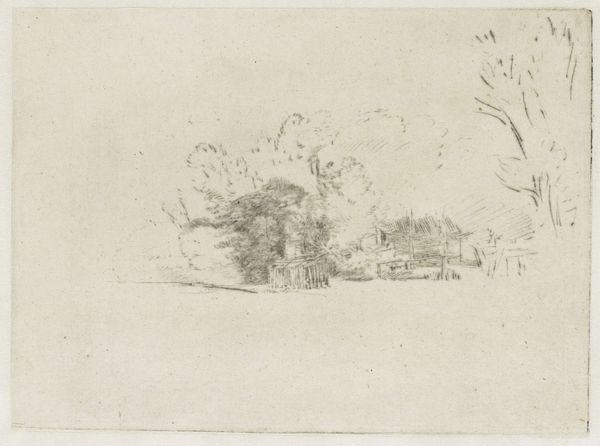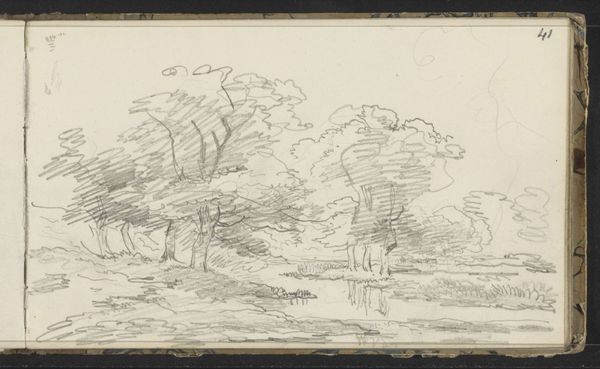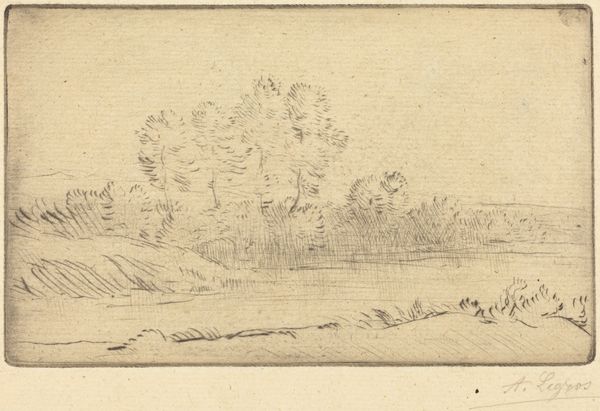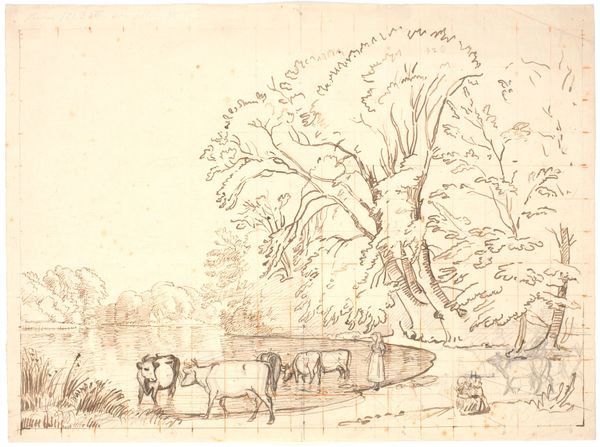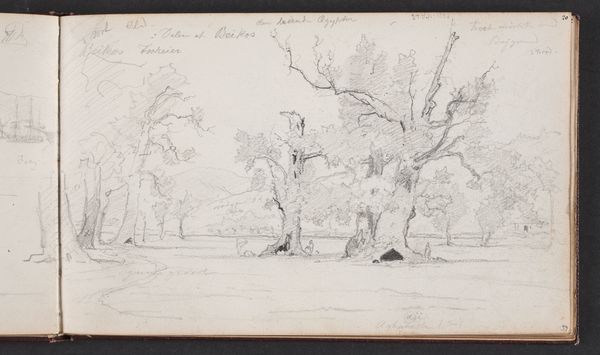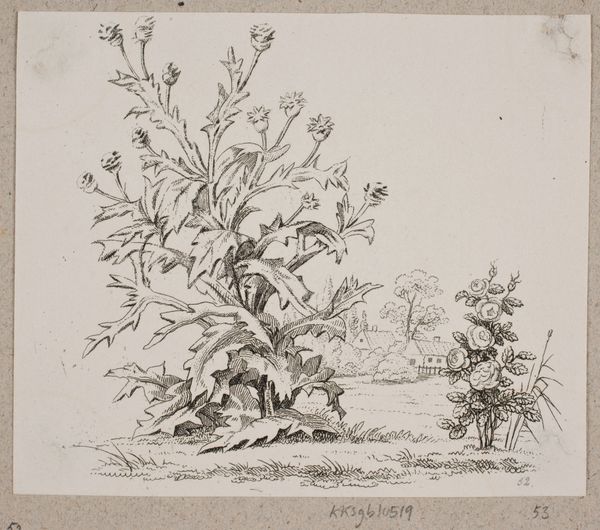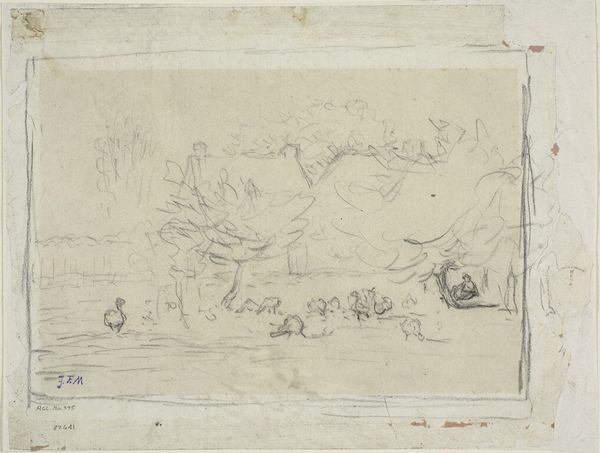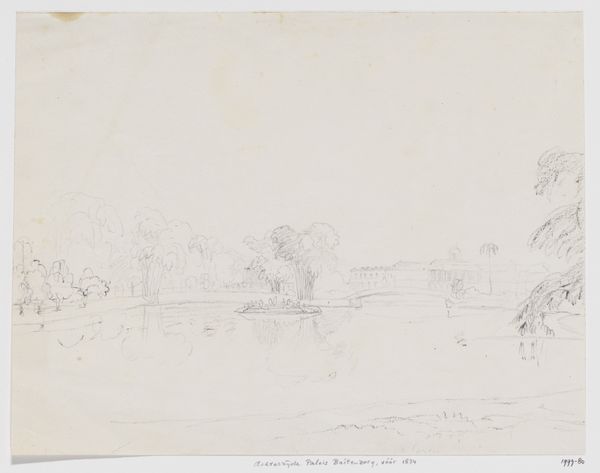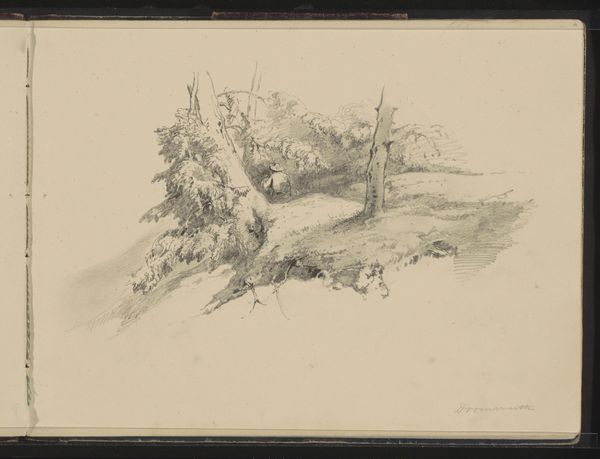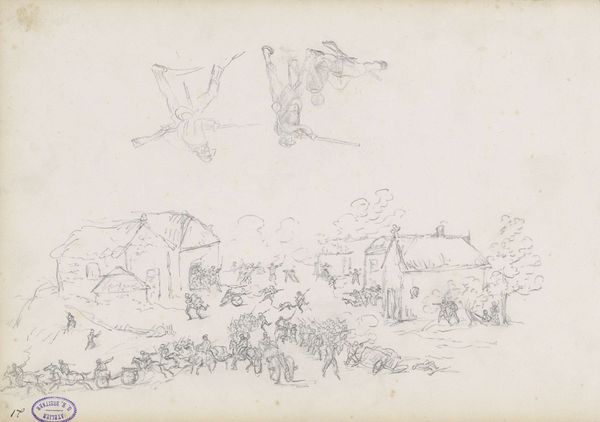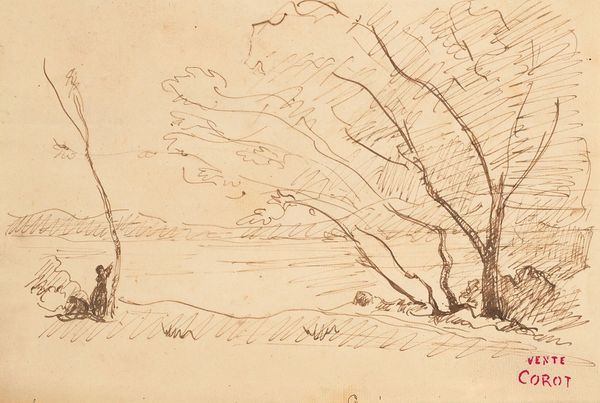
Marklandskab med et piletræ ved store sten, en hane, en plov og tre køer 1847
0:00
0:00
drawing
#
drawing
#
landscape
#
etching
#
romanticism
#
realism
Dimensions: 146 mm (height) x 212 mm (width) (bladmaal)
Curator: There's a quiet stillness to this drawing. The bare branches of that willow tree against the wide, open sky evoke a sense of peaceful isolation. Editor: Absolutely. This is "Landscape with a Willow Tree by Large Stones, a Rooster, a Plough and Three Cows," created in 1847 by Johan Thomas Lundbye. It's a delicate drawing, created with a brown ink which gives a slightly faded affect which lends itself well to the theme. Lundbye’s landscapes, which captured rural life, often became powerful symbols of national identity. Curator: Yes, the placement of the cows, rooster, and even the plough, suggests an Edenic depiction of Denmark that carries heavy socio-political symbolism for its contemporary audience. The symbols celebrate rural life at a time when industrialization threatened it, while reinforcing ideas about who belongs to this landscape and who does not. Editor: Note how he positions that willow tree as a central visual and almost emblematic element, its roots seemingly anchored within these historical boulders. It almost has an anthropomorphic feeling; the witness of history itself rooted within its location. Do you get that sense as well? Curator: Certainly, willows have long signified mourning, and while the drawing itself feels serene, perhaps that hint of melancholy is an acknowledgment of change, the anxieties of modernity. You could say it symbolizes the rural past and how the artist tried to preserve its memory through these very landscapes that made the establishment anxious at the time. Editor: Fascinating. It's a seemingly simple, tranquil scene, rendered with great tenderness, yet filled with symbolic layers about Danish identity. It encourages us to really dig deeply, perhaps, when thinking of what’s considered simple and idyllic within rural iconography and romantic realism. Curator: Indeed, the deceptively simple landscapes of the Golden Age carried an implicit nationalism tied to the power structures. Editor: Lundbye’s Landscape, with its melancholic symbolism, asks profound questions about nationhood and identity. Thank you.
Comments
No comments
Be the first to comment and join the conversation on the ultimate creative platform.
